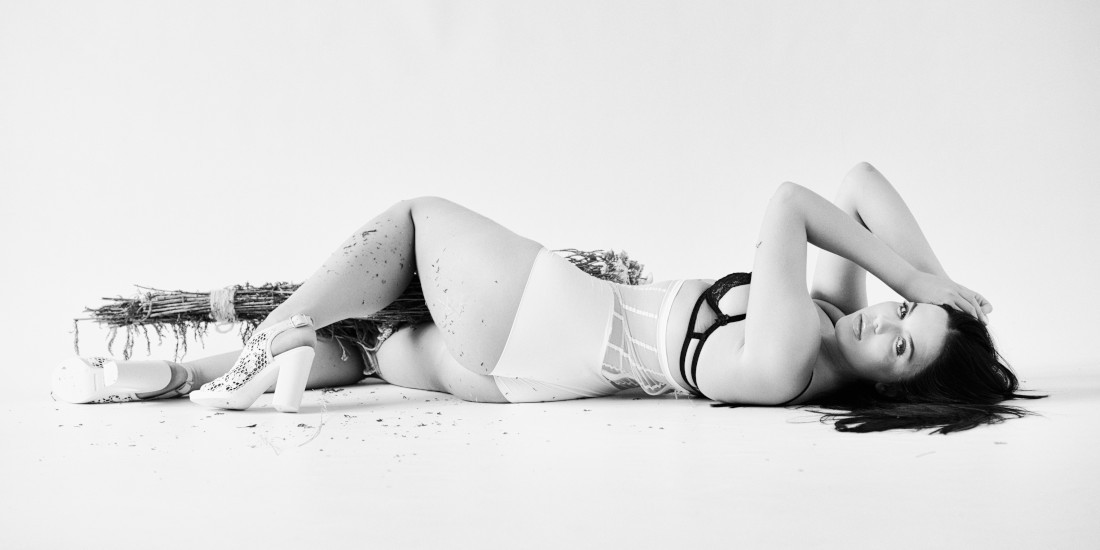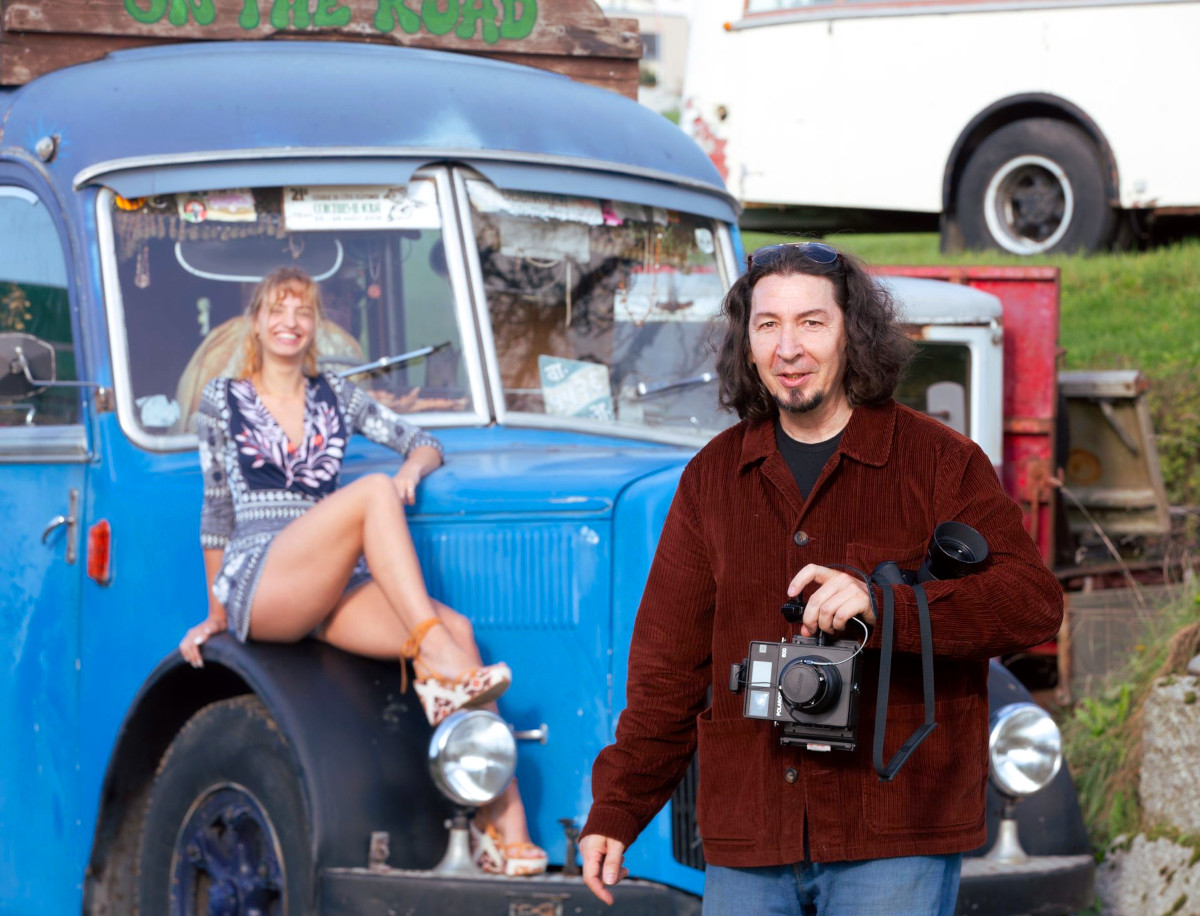
Opening on Saturday 4 November from 11am to 8pm.
Exhibition from 31 October to 1 December 2023.
At the Audacieuse-Galerie, 50 rue Ancienne in Carouge GE.
Discover the photographs by Alexandre Pierre Albert
The artist stages unlikely places and female bodies. It's an approach that encourages the viewer to look beyond the obvious photographic evidence.
 Photo credits: Keren Bisaz / Mirage photography
Photo credits: Keren Bisaz / Mirage photography
INTERVIEW
What is your signature style, what sets you apart from other artists?
We're all different, my life, my experiences, my inspirations... I like it, I don't like it; my faith is that "I" is always singular...
At the same time, we're not perfectly unique; our gregariousness means that we inevitably share our likes and dislikes with others.
If we create sincerely, by which I mean without money or fame as an ulterior motive, distancing ourselves from moral or intellectual constraints, we represent ourselves as well as we represent ourselves.
Signature? I would say sincerity. I create without ulterior motives, which is easy to see if you spend 30 seconds on one of my images, but sometimes difficult to explain, considering my subjects.
Optimistic, perhaps, in the sense that I always hope that the reader or viewer will look at my work with an open mind.
Provocative and ironic, all the same, my stories are not soppy and nothing amuses me more than seeing people lift their chins and wrinkle their noses at "all those immorally exposed bodies", "those places so dark", "those heels so high".
On another note, I use the places I find without touching them. If it's dark, then the photo will be dark, if it's broken, if it leaks, if it's lame, then the story will be written accordingly.
Your professional activity is centered on architectural photography, but the artistic side of your work seems to be at the opposite end of the spectrum from the conventional aesthetic of this kind of photography. How do you reconcile these two aspects?
On the one hand, I represent the vision of the architect, of a client. I'm at his service and my job, in this case, is to enhance his vision with conviction and objectivity.
It's a framed interpretation, if you like, but it's also limited by the technical imperatives and aesthetic conventions of the genre.
Artistic stagings tell stories.
Places, models and props are chosen with a narrative purpose in mind, depending on the tone I want to set and the spirit of the place.
It's an imaginary, allegorical and ironic world. Unlike the somewhat clinical determinism that underlies architectural photography, here we are dealing with the improbable, the imperfect, the subjectively beautiful, the freedom that I allow myself.
In fact, these two aspects of my work are a bit like speaking several languages.
You're the same person when you speak your mother tongue or another language you've mastered, but at the same time a little different, not breathing the same breath.
What do you want to convey?
Transmit... emotions, food for thought to see beyond the obvious?
Discover the photographs by Alexandre Pierre Albert
What do you think about the future of photography, how do you see it evolving in the future?
One day, one of my teachers, a very well-known and esteemed photographer, held his camera up to my face and said: "Don't get me wrong, the camera... this camera, and all the other cameras, don't take photos, ever! The human being behind the viewfinder takes the photo!
Knowing the fetishism (well nurtured by the major brands) of the vast majority of photographers for their equipment, this was a shocking, anathema statement.
As far as I'm concerned, it was the most sensible lesson I ever heard on the subject, a lesson I've lived with ever since.
The future of photography is like the future of painting or the future of literature.
As long as there are people to tell stories, to bear witness and as long as there are people to listen, to marvel or to be appalled, art will survive.
Painting is not photography; painting exists, so does photography, and there is no competition between the two.
Perhaps we'll see other mediums emerge from future technological innovations? Certainly, and so much the better!
The fact remains that photography, in all its simplicity, is an opportunity for anyone to create, to bear witness, to imagine, to take pleasure in seeing and making others see.
An eye, a finger, a bit of light and anything or anyone in the frame, and that's it!
Popular by definition, photography is here to stay, even if its technological form continues to evolve.
If we're talking about art, it's more complicated: you have to take into account the simple fact that the artist hopes to earn an income from his work.
Sorry, but I'm using myself as an example. For my stories, I manage to take about fifteen shots in half a day.
In general, I keep half of them, my publisher half of that half, and my gallery owner one or two at best.
In practical terms, a story means finding a location, renting it or negotiating its use.
It also means finding one or more models that you think are ideal for the location and the story.
Of course, you also have to look for, find and buy their outfits, organize their travel and pay for insurance, remuneration or compensation.
All that to say that when it comes to art, production has a cost.
Success, even modest success, is a rather mysterious thing, sometimes works sell, and sometimes they don't... As with any business, if sales don't keep up, you give up producing and do something else.
The future of art photography is in the hands of the public; it's art lovers and art patrons who will decide its future.
What does your artistic practice bring you personally?
First, I'm afraid that's a very selfish question...
Leaving aside any objective or critical considerations, if, when I pull out the Polaroid or look at my screen, the shot shows something that moves me, then that's what satisfies me.
Otherwise, once they've seen the light of day, I let the images live their own lives; in a sense, they no longer belong to me. Everyone sees them in a different light, thinks what they want, likes them or hates them.
Hearing people talk about them, seeing their emotions and knowing that, perhaps, these images will live on in their next discussions is also very satisfying.
What is the first thing that makes you want to use a location?
Light, or the lack of it. The tones, the objects, the history of the place, imaginary or real. Often, it's also the power of absence that you feel when you enter an empty space, a certain kind of silence.
The emptiness, how it is articulated and how I think I can take hold of it, how I think I can resurrect it, for a time.
How do you choose your models, and how do you dress them?
In the grand scheme of things, I compose my scenes starting from the location, from what I discover there.
The decor, the light, the geometric features of the space, all brought together in a frame.
The choice of model usually comes quite naturally, in the sense that she has to fit into the imagined setting.
She has to be the counterpoint to the place, the breath of life that will make the scene humanly interesting, the soul of the place if I dare say so.
Clothes and accessories are also chosen to match the location, support the narrative, reinforce or erase certain features of the chosen place.
Dressed or nude, that's a decision that's often taken on the spur of the moment, again depending on the mood of the location and the light, although it's always discussed in advance.
Discover the photographs by Alexandre Pierre Albert
What do you think about when you take a picture?
The unflattering version:
"Breath! check and recheck / film, dark slide / lens cocked, plate loaded, level, exposure...
the light is here to stay, the model is not going away, stay calm, do not panic, everything is going well, everything is going well..."
The intellectual version:
Composition, lines and light, exposure. I usually have a good idea of the set, but you cannot really predict everything.
So there often is a lot of fiddling around, moving things out or in the way, changing an accessory, adjusting clothes...
Mostly, it is the process to get everything right, to get the scene I formulated in my head to print.
I don't really think about something, but a dozen details that I have to make do with.
The unpublishable version (aka the truth):
When you bring the model in the frame, this is like bringing a ray of light in it. Suddenly the set comes alive, and everything needs to be redone according to her.
Skin tones, expression, position, small details (that no one will ever see...) come to focus. This is also the moment I take her presence fully. Before being staged, she is a model, in her own right and style, a kind of surreal perfection, but a model.
When she set herself, this is also the moment of truth. I can plan and prepare as much I want, It is difficult to be certain the "tableau" I imagined is really working before that.
So this is a very busy moment, to take it all in, trying to match her beauty and produce something that is worth of her presence. That's the moment when I love her more than everything; because in that moment she is not a person anymore, but the true embodiment of beauty. The essence of grace, a mystical being that come to life in front of me;
the salt of my tears and the ruin of my soul for every 125th of second she will be away of my frame.








